The Small Wind Power market is expected to grow from USD 15.63 billion in 2022 to USD 62.30 billion by 2032, at a CAGR of 14.83% during the forecast period 2023-2032.
Small wind power refers to the utilization of wind energy by installing and operating small-scale wind turbines. These turbines typically have a capacity ranging from a few hundred watts to a few hundred kilowatts, making them suitable for generating electricity on a local or decentralized scale. Small wind power systems are typically deployed in residential, agricultural, or commercial settings, unlike large-scale wind farms that feature massive turbines.
The increasing emphasis on clean and sustainable energy sources drives the adoption of small wind power systems as they provide a localized and environmentally friendly solution. In addition, small wind power systems offer a promising solution for remote and off-grid areas, providing electricity in locations with limited or no access to the centralized power grid. This factor is anticipated to witness significant opportunities over the forecast period. However, the initial investment required for small wind power systems can be a significant barrier, deterring potential adopters from installing them.
This study comprehensively analyses type, application, and region. The type segment includes horizontal axis wind turbine and vertical axis wind turbine. The horizontal axis wind turbine segment held the highest market share in 2022. Horizontal axis wind turbines generally exhibit higher efficiency than vertical axis wind turbines (VAWTs). HAWTs are designed to face directly into the wind, maximizing their exposure to the wind flow and generating more power per unit swept area. This higher efficiency makes HAWTs a preferred choice for small wind power installations. The application segment is divided into commercial, utility and residential. The commercial segment registered the largest market share in 2022. The commercial sector encompasses many businesses, including offices, retail stores, hotels, industrial facilities, and others. These establishments typically have higher energy consumption requirements than residential or agricultural users. Small wind power systems can be scaled up to meet the power demands of commercial applications, making them a suitable solution for these businesses.
The market has been divided into North America, Europe, Asia-Pacific, Middle East & Africa, and South America. The Europe region held the highest market revenue in 2022. European countries have shown a strong commitment to renewable energy and have implemented favourable policies and regulations to promote its adoption. Feed-in tariffs, renewable energy targets, tax incentives, and grants have encouraged investment in small wind power systems. This policy support has created a conducive environment for the region's small wind power market growth.
Some of the notable players in the market are Southwest Wind power, Northern Power Systems, High Energy Technology, ZK Energy, BWC, GE Wind, BegeyWindPower Co. Inc., Shanghai Grehpower Green Energy Co. Ltd., Kingspan Group, Endurance Wind Power Inc., City Windmills Holdings PLC, Ennera Energy and Mobility, Guangzhou HY Energy Technology Co. Ltd., Matric Limited, and Dong Energy among others.
Report Description:
1. Introduction
1.1. Objectives of the Study
1.2. Market Definition
1.3. Research Scope
1.4. Currency
1.5. Key Target Audience
2. Research Methodology and Assumptions
3. Executive Summary
4. Premium Insights
4.1. Porter’s Five Forces Analysis
4.2. Value Chain Analysis
4.3. Top Investment Pockets
4.3.1. Market Attractiveness Analysis By Type
4.3.2. Market Attractiveness Analysis By Application
4.3.3. Market Attractiveness Analysis By Region
4.4. Industry Trends
5. Market Dynamics
5.1. Market Evaluation
5.2. Drivers
5.2.1. Growing demand for renewable energy
5.3. Restraints
5.3.1. High upfront costs
5.4. Opportunities
5.4.1. Off-grid applications
5.5. Challenges
5.5.1. Limited scalability
6. Global Small Wind Power Market Analysis and Forecast, By Type
6.1. Segment Overview
6.2. Horizontal Axis Wind Turbine
6.3. Vertical Axis Wind Turbine
7. Global Small Wind Power Market Analysis and Forecast, By Application
7.1. Segment Overview
7.2. Commercial
7.3. Utility
7.4. Residential
8. Global Small Wind Power Market Analysis and Forecast, By Regional Analysis
8.1. Segment Overview
8.2. North America
8.2.1. U.S.
8.2.2. Canada
8.2.3. Mexico
8.3. Europe
8.3.1. Germany
8.3.2. France
8.3.3. U.K.
8.3.4. Italy
8.3.5. Spain
8.4. Asia-Pacific
8.4.1. Japan
8.4.2. China
8.4.3. India
8.5. South America
8.5.1. Brazil
8.6. Middle East and Africa
8.6.1. UAE
8.6.2. South Africa
9. Global Small Wind Power Market-Competitive Landscape
9.1. Overview
9.2. Market Share of Key Players in Global Small Wind Power Market
9.2.1. Global Company Market Share
9.2.2. North America Company Market Share
9.2.3. Europe Company Market Share
9.2.4. APAC Company Market Share
9.3. Competitive Situations and Trends
9.3.1. Product Launches and Developments
9.3.2. Partnerships, Collaborations, and Agreements
9.3.3. Mergers & Acquisitions
9.3.4. Expansions
10. Company Profiles
10.1. Southwest Wind power
10.1.1. Business Overview
10.1.2. Company Snapshot
10.1.3. Company Market Share Analysis
10.1.4. Company Product Portfolio
10.1.5. Recent Developments
10.1.6. SWOT Analysis
10.2. Northern Power Systems
10.2.1. Business Overview
10.2.2. Company Snapshot
10.2.3. Company Market Share Analysis
10.2.4. Company Product Portfolio
10.2.5. Recent Developments
10.2.6. SWOT Analysis
10.3. High Energy Technology
10.3.1. Business Overview
10.3.2. Company Snapshot
10.3.3. Company Market Share Analysis
10.3.4. Company Product Portfolio
10.3.5. Recent Developments
10.3.6. SWOT Analysis
10.4. ZK Energy
10.4.1. Business Overview
10.4.2. Company Snapshot
10.4.3. Company Market Share Analysis
10.4.4. Company Product Portfolio
10.4.5. Recent Developments
10.4.6. SWOT Analysis
10.5. BWC
10.5.1. Business Overview
10.5.2. Company Snapshot
10.5.3. Company Market Share Analysis
10.5.4. Company Product Portfolio
10.5.5. Recent Developments
10.5.6. SWOT Analysis
10.6. GE Wind
10.6.1. Business Overview
10.6.2. Company Snapshot
10.6.3. Company Market Share Analysis
10.6.4. Company Product Portfolio
10.6.5. Recent Developments
10.6.6. SWOT Analysis
10.7. BegeyWindPower Inc.
10.7.1. Business Overview
10.7.2. Company Snapshot
10.7.3. Company Market Share Analysis
10.7.4. Company Product Portfolio
10.7.5. Recent Developments
10.7.6. SWOT Analysis
10.8. Shanghai Grehpower Green Energy Co. Ltd.
10.8.1. Business Overview
10.8.2. Company Snapshot
10.8.3. Company Market Share Analysis
10.8.4. Company Product Portfolio
10.8.5. Recent Developments
10.8.6. SWOT Analysis
10.9. Kingspan Group
10.9.1. Business Overview
10.9.2. Company Snapshot
10.9.3. Company Market Share Analysis
10.9.4. Company Product Portfolio
10.9.5. Recent Developments
10.9.6. SWOT Analysis
10.10. Endurance Wind Power Inc.
10.10.1. Business Overview
10.10.2. Company Snapshot
10.10.3. Company Market Share Analysis
10.10.4. Company Product Portfolio
10.10.5. Recent Developments
10.10.6. SWOT Analysis
10.11. City Windmills Holdings PLC
10.11.1. Business Overview
10.11.2. Company Snapshot
10.11.3. Company Market Share Analysis
10.11.4. Company Product Portfolio
10.11.5. Recent Developments
10.11.6. SWOT Analysis
10.12. Ennera Energy and Mobility
10.12.1. Business Overview
10.12.2. Company Snapshot
10.12.3. Company Market Share Analysis
10.12.4. Company Product Portfolio
10.12.5. Recent Developments
10.12.6. SWOT Analysis
10.13. Guangzhou HY Energy Technology Co. Ltd.
10.13.1. Business Overview
10.13.2. Company Snapshot
10.13.3. Company Market Share Analysis
10.13.4. Company Product Portfolio
10.13.5. Recent Developments
10.13.6. SWOT Analysis
10.14. Matric Limited
10.14.1. Business Overview
10.14.2. Company Snapshot
10.14.3. Company Market Share Analysis
10.14.4. Company Product Portfolio
10.14.5. Recent Developments
10.14.6. SWOT Analysis
10.15. Dong Energy
10.15.1. Business Overview
10.15.2. Company Snapshot
10.15.3. Company Market Share Analysis
10.15.4. Company Product Portfolio
10.15.5. Recent Developments
10.15.6. SWOT Analysis
List of Table
1. Global Small Wind Power Market, By Type, 2019-2032 (USD Billion)
2. Global Horizontal Axis Wind Turbine, Small Wind Power Market, By Region, 2019-2032 (USD Billion)
3. Global Vertical Axis Wind Turbine, Small Wind Power Market, By Region, 2019-2032 (USD Billion)
4. Global Small Wind Power Market, By Application, 2019-2032 (USD Billion)
5. Global Commercial, Small Wind Power Market, By Region, 2019-2032 (USD Billion)
6. Global Utility, Small Wind Power Market, By Region, 2019-2032 (USD Billion)
7. Global Residential, Small Wind Power Market, By Region, 2019-2032 (USD Billion)
8. Global Small Wind Power Market, By Region, 2019-2032 (USD Billion)
9. North America Small Wind Power Market, By Type, 2019-2032 (USD Billion)
10. North America Small Wind Power Market, By Application, 2019-2032 (USD Billion)
11. U.S. Small Wind Power Market, By Type, 2019-2032 (USD Billion)
12. U.S. Small Wind Power Market, By Application, 2019-2032 (USD Billion)
13. Canada Small Wind Power Market, By Type, 2019-2032 (USD Billion)
14. Canada Small Wind Power Market, By Application, 2019-2032 (USD Billion)
15. Mexico Small Wind Power Market, By Type, 2019-2032 (USD Billion)
16. Mexico Small Wind Power Market, By Application, 2019-2032 (USD Billion)
17. Europe Small Wind Power Market, By Type, 2019-2032 (USD Billion)
18. Europe Small Wind Power Market, By Application, 2019-2032 (USD Billion)
19. Germany Small Wind Power Market, By Type, 2019-2032 (USD Billion)
20. Germany Small Wind Power Market, By Application, 2019-2032 (USD Billion)
21. France Small Wind Power Market, By Type, 2019-2032 (USD Billion)
22. France Small Wind Power Market, By Application 2019-2032 (USD Billion)
23. U.K. Small Wind Power Market, By Type, 2019-2032 (USD Billion)
24. U.K. Small Wind Power Market, By Application 2019-2032 (USD Billion)
25. Italy Small Wind Power Market, By Type, 2019-2032 (USD Billion)
26. Italy Small Wind Power Market, By Application 2019-2032 (USD Billion)
27. Spain Small Wind Power Market, By Type, 2019-2032 (USD Billion)
28. Spain Small Wind Power Market, By Application 2019-2032 (USD Billion)
29. Asia Pacific Small Wind Power Market, By Type, 2019-2032 (USD Billion)
30. Asia Pacific Small Wind Power Market, By Application 2019-2032 (USD Billion)
31. Japan Small Wind Power Market, By Type, 2019-2032 (USD Billion)
32. Japan Small Wind Power Market, By Application 2019-2032 (USD Billion)
33. China Small Wind Power Market, By Type, 2019-2032 (USD Billion)
34. China Small Wind Power Market, By Application 2019-2032 (USD Billion)
35. India Small Wind Power Market, By Type, 2019-2032 (USD Billion)
36. India Small Wind Power Market, By Application 2019-2032 (USD Billion)
37. South America Small Wind Power Market, By Type, 2019-2032 (USD Billion)
38. South America Small Wind Power Market, By Application 2019-2032 (USD Billion)
39. Brazil Small Wind Power Market, By Type, 2019-2032 (USD Billion)
40. Brazil Small Wind Power Market, By Application 2019-2032 (USD Billion)
41. Middle East and Africa Small Wind Power Market, By Type, 2019-2032 (USD Billion)
42. Middle East and Africa Small Wind Power Market, By Application 2019-2032 (USD Billion)
43. UAE Small Wind Power Market, By Type, 2019-2032 (USD Billion)
44. UAE Small Wind Power Market, By Application 2019-2032 (USD Billion)
45. South Africa Small Wind Power Market, By Type, 2019-2032 (USD Billion)
46. South Africa Small Wind Power Market, By Application 2019-2032 (USD Billion)
List of Figures
1. Global Small Wind Power Market Segmentation
2. Global Small Wind Power Market: Research Methodology
3. Market Size Estimation Methodology: Bottom-Up Approach
4. Market Size Estimation Methodology: Top-Down Approach
5. Data Triangulation
6. Porter’s Five Forces Analysis
7. Value Chain Analysis
8. Global Small Wind Power Market Attractiveness Analysis By Type
9. Global Small Wind Power Market Attractiveness Analysis By Application
10. Global Small Wind Power Market Attractiveness Analysis By Region
11. Global Small Wind Power Market: Dynamics
12. Global Small Wind Power Market Share By Type (2023 & 2032)
13. Global Small Wind Power Market Share By Application (2023 & 2032)
14. Global Small Wind Power Market Share By Regions (2023 & 2032)
15. Global Small Wind Power Market Share By Company (2022)
Market research is a method of gathering, assessing and deducing data & information about a particular market. Market research is very crucial in these days. The techniques analyze about how a product/service can be offered to the market to its end-customers, observe the impact of that product/service based on the past customer experiences, and cater their needs and demands. Owing to the successful business ventures, accurate, relevant and thorough information is the base for all the organizations because market research report/study offers specific market related data & information about the industry growth prospects, perspective of the existing customers, and the overall market scenario prevailed in past, ongoing present and developing future. It allows the stakeholders and investors to determine the probability of a business before committing substantial resources to the venture. Market research helps in solving the marketing issues challenges that a business will most likely face.
Market research is valuable because of the following reasons:
Our research report features both the aspects; qualitative and quantitative. Qualitative part provides insights about the market driving forces, potential opportunities, customer’s demands and requirement which in turn help the companies to come up with new strategies in order to survive in the long run competition. The quantitative segment offers the most credible information related to the industry. Based on the data gathering, we use to derive the market size and estimate their future growth prospects on the basis of global, region and country.
Our market research process involves with the four specific stages.

Data Collection: This stage of the market research process involves with the gathering and collecting of the market/industry related data from the sources. There are basically two types of research methods:
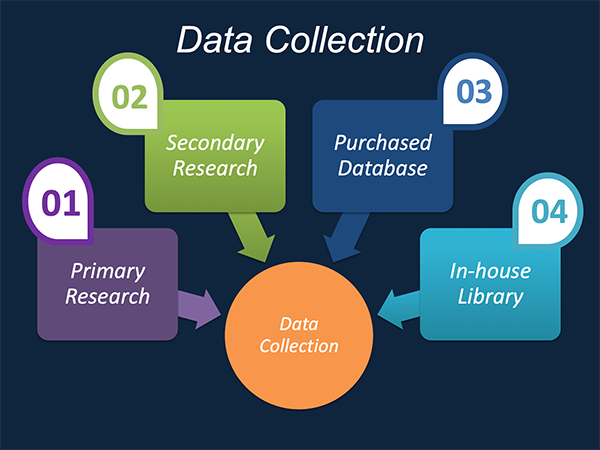
Data Synthesis: This stage includes the evaluation and assessment of all the data acquired from the primary and secondary research. It likewise includes in evaluating the information for any disparity watched while information gathering identified with the market. The data & information is gathered with consideration to the heterogeneity of sources. Scientific and statistical methods are implemented for synthesizing dissimilar information sets and provide the relevant data which is fundamental for formulating strategies. Our organization has broad involvement with information amalgamation where the information goes through different stages:


Market Formulation & Deduction: The last stage includes assigning the data & information in a suitable way in order to derive market size. Analyst reviews and domain based opinions based on holistic approach of market estimation combined with industry investigation additionally features a crucial role in this stage.
This stage includes with the finalization of the market size and numbers that we have gathered from primary and secondary research. With the data & information addition, we ensure that there is no gap in the market information. Market trend analysis is finished by our analysts by utilizing data extrapolation procedures, which give the most ideal figures to the market.
Data Validation: Validation is the most crucial step in the process. Validation & re-validation through scientifically designed technique and process that helps us finalize data-points to be used for final calculations. This stage also involves with the data triangulation process. Data triangulation generally implicates the cross validation and matching the data which has been collected from primary and secondary research methods.





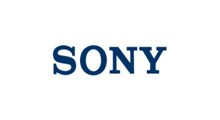

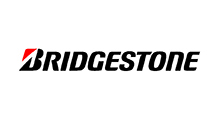

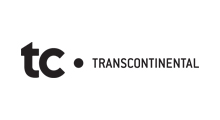















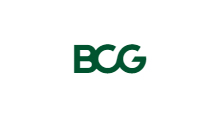


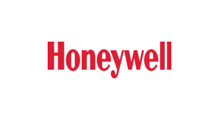

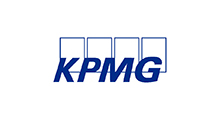
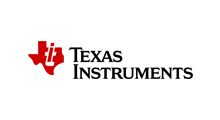



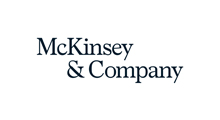

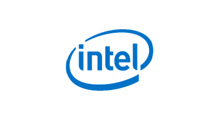







Free Customization
Countries can be added on demand
Free yearly update on purchase of Multi/Corporate User License
Companies served till date

We serve our customers 24x7 for 365 days through calls, emails and live chat options.

Huge database of exceptional market reports bringing market intelligence to your fingertips.

SSL enabled, we offer you various secured payment options for risk free purchase.